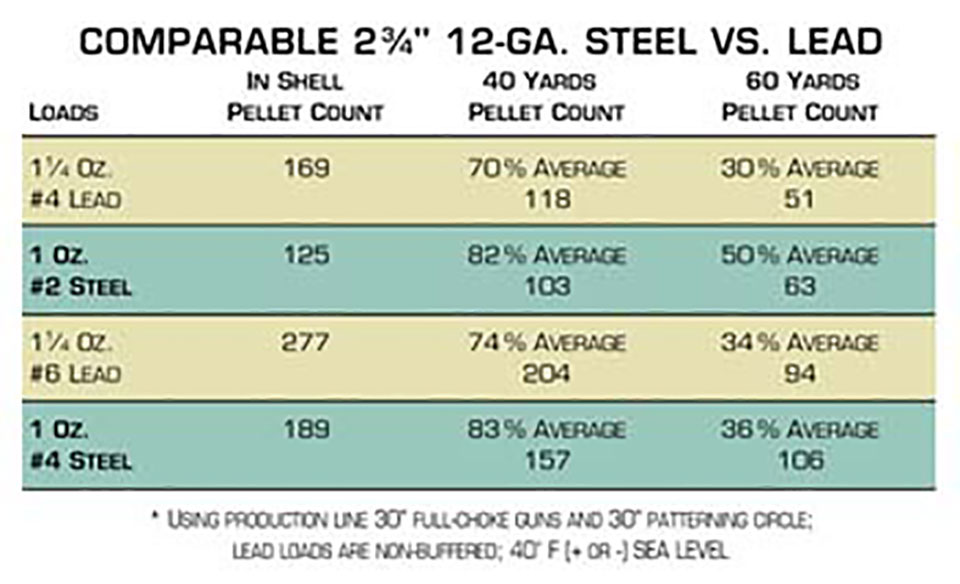The recent announcement of a plan to work towards a non-toxic future for UK shooters has focussed many minds on the alternatives. Steel, being the most cost-effective option (about the same cost as lead, or even a little cheaper) requires a close examination.
Steel has been used by wild-fowlers in many countries, including the UK, for twenty years and ammunition makers have discovered some interesting facts, which will help with the further development of steel loads for UK hunting applications, where different rules of proof apply.
The data here was produced by US manufacturer Remington. It outlines the performance of steel vs lead shot. The facts may surprise some readers.
Shot sizes mentioned in the tables are American, which differ slightly to English sizes, but not significantly enough to affect the outcomes illustrated here.

The greater number of pellets to the ounce you get when choosing steel shot means that the shot column will stack higher, making the use of longer cases beneficial (creating an issue for users of English guns with short (2 1/2") chambers. However, some testers report the higher pellet count allows for a lighter load to be used at normal ranges (24g of steel) with good results. The light weight of steel shot means that at longer range, you will need bigger pellets. At shorter ranges, bigger pellets may also help as the meat will be less damaged by the tighter patterns steel delivers (see below).
Steel shot compared to lead - energy retention at range.

At normal game shooting ranges, the steel shot performs comparably to lead, with a steel No.4 delivering the same energy at 50 yards as a lead No.6 (1.8 ft-lbs). There remains a need for a lot of experimentation with steel for English guns, given the restrictions of pressure and the wadding requrements to protect the barrels, however, the data here shows steel can be made to compensate for its lightness by clever loading.
Steel shot compared to lead - shot string.


The shot string is the length of the column of shot as it travels towards the target. The pellets at the front hit first, with the trailing pellets arriving a fraction of a second later. Because steel is hard, it deforms less than lead and does not spread-out as much in flight. This means that your steel load arrives on target closer together and more in unison. This accounts for reports that steel kills well but damages the meat more than lead loads. The patterns indicate that less choke is required to deliver a 'killing pattern' at your desired range than you currently employ with lead shot.
Steel shot compared to lead - pellet count.
Because steel is lighter than lead (steel is 7.8 and lead is 11.34 on a scale of density), there are more steel pellets of a given size in an ounce load. This provides closer patterns, as there are more pellets to fill the spread, leaving fewer gaps through which a bird can escape. However, because it is less dense, steel slows and loses energy faster than lead. To compensate, shooters are recommended to choose a shot size two bigger than usual - so, if you use lead No.6, choose steel No.4. That way, the same energy delivery you are used to will be produced at 40 yards. The problem with bigger shot is that the pattern then becomes more open but remember, there are more steel pellets in the same weight load, which will help fill the pattern, removing the problem.

Published by Vintage Guns Ltd on



